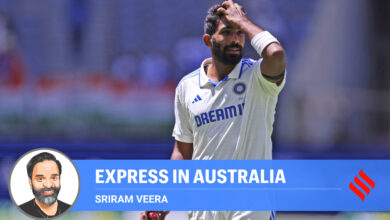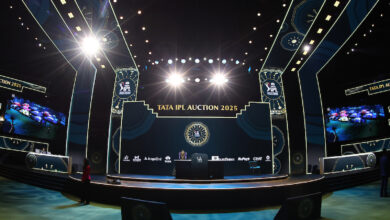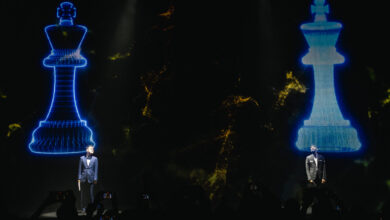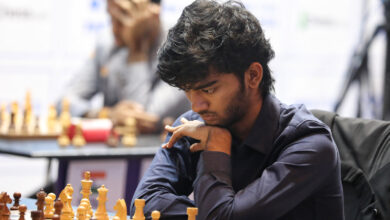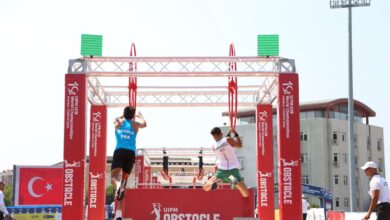India’s Olympic-bound shuttlers can simulate court conditions, but can they recreate nerve-shredding pressure of 19-19 in a decider? | Badminton News

India’s Olympic-bound shooters and archers are attempting to recreate the field-of-play from the Paris Games, in order to be best prepared for the quadrennial. Just how accurately they can mimic the lighting and background texture of the targets on the shooting range, or whip up similar windy or rainy and fading light conditions that routinely thwart India’s medal attempts in archery, will be known when the medals fetch up. But the effort cannot be faulted. Can badminton manage the perfect simulation?It is believed, though China doesn’t sing and dance about it much, that their resurgence in women’s singles at the Olympics when Chen Yufei won gold in Tokyo, came on the back of pin-point dry runs in the leadup. They recreated at their Chinese training base, the entire travel journey in shuttle buses through post-pandemic Olympic streets of Tokyo, after calculating the exact time it would take to go from the athlete’s accommodation to the arena. They had a fair idea of the architecture of the venue – entrance, warmup areas, anti-doping control zones, etc, how the court drift would play out due to air-conditioning, and most decisively how a particular type of shuttle (slow or fast or semi of a specific brand), would play out in that specific arena.
It helped that Tokyo had no crowds, taking out immediately the one variable of noise decibel and air-moure levels that can affect how a court plays in what an amateur would assume is a controlled, indoor atmosphere. Eiffel Tower or cherry blossoms outside, inside it’s just a darkened hall with spotlights on the courts, right? Wrong.
India’s Pusarla V. Sindhu in action (AP/PTI)
Chen Yufei is a mighty efficient player, with plenty of brains and a solid game. But you can’t discount that Chinese background preparation contributed that fraction extra to her beating Tai Tzu Ying in the final. PV Sindhu took down the other Chinese He Bingjiao after landing in Tokyo, reportedly after somewhat similar simulations in Hyderabad at Gachibowli stadium, and won bronze too. But she would rue the missed final opportunity when at her best physically, her game completely collapsed against Tai Tzu Ying in the semifinals. It’s the robust game that counts foremost, before the atmospherics and accessories chip in with their effects on a sporting contest.
So headed to another Olympics chasing a horic third medal, Sindhu’s decision on her lead-up to Paris, will need to be viewed from that lens. Saarbrucken in Germany, with its limited badminton credentials though similar acclimatization as Paris, offers her the mental peace and privacy to train without constant dractions. But assuming her team takes adequate care of keeping her fit while away from being monitored, her preparation will need that levelling up of tactics which are far more crucial for Coach Agus and Sindhu than assorted simulations.
A bunch of juniors, Neer Nehwal, Prajwal Sonawane and Manish Phogat are slated to travel to Germany for Sindhu’s month-long stint, while two canny coaches in Sagar Chopda and Thilak will take turns in interactive sparring and tweaking of her techniques.
Prakash Padukone is expected to join in the last 10 days of her German preparation, and those will be crucial to sort out Sindhu’s most persent problem – her shot selection and decision-making at the endgame. Women’s singles game also throws up unique game styles and Sindhu has recurring problems against lefties. Tournaments in the run-up haven’t looked too promising in addressing that issue, but Sindhu is known to turn up at Olympics and get the job done. The gap with the elite field has increased, and she will need more than simulations or solitude to pull it off this time.
Lakshya Sen in action at Indonesia Open. (BWF / Badminton Photo)
Lakshya Sen meanwhile will train with the French Popov brothers at their facility in France. He hopes to get an idea of how the Paris main courts would play in his 10 day soft landing for his first Olympics. The two courts he rents out are expected to be similar to how shuttles will fly in the Games hall, and Ayush Shetty and Chirag Sen will help with sparring. But though tipped to be a big occasion player, Sen too has much work to do in how to close out matches against the top players.
Simulating conditions will certainly help Sen because getting the length right on his shots is pivotal for him to get going. He has consently made quarters in the last few months, but all the top players know they can pin him to the backcourt and wear him down from there. A Plan B has to be formulated, but in Sen’s case the Plan A especially when Axelsen, Antonsen or Kunlavut patiently wait out his defensive exuberance and amp up attacks suddenly, needs firming up too.
HS Prannoy will stay put at Hyderabad and benefit from having the combined cerebral might of previous Olympians, now his coaches, as well as the best sparring available. Like Sindhu in her prime, not so much in recent times, Prannoy was never fussed over conditions and adapted to them intelligently, with even mid-match adjustments. His challenge is to stay physically intact, and train in familiar environs, surrounded the likes of Gopichand, Kashyap, Guru Saidutt and hopefully Srikanth, as well as doubles pros, who constantly help him in the creative enhancement of his game with tweaked and tasered strokes.
HS Prannoy in action during the 2024 Thomas Cup. (BWF/Badminton Photo)
Prannoy can take on high intensity sessions, but his recovery and endurance for possible later, medal-rounds remains his challenge. It’s where the younger Sen is tireless.
For India’s brightest medal hopes, Satwik-Chirag, the yearly simulation for Paris has been winning the titles there, or going down trying at least. Camping in Denmark ahead of their doomed World Championships campaign of 2023, wasn’t the smartest idea. The grandest challenge for their team will be in lining up sparring players who can simulate the brilliant whacko serves of a Bagas Maulana or a Liang Weikeng, though Mathias Boe can stand there whole day and mimic all the magnificent oddballs his wards might encounter. Him and his frenzied avatar can simulate all aural, visual, technical probabilities, contrive the problems and bark out the solutions, even as the national training centre chips in with out-of-the-box ideas.
Olympic halls tend to be long and grand with shuttles leaning towards the slow, though Paris could throw up a surprise or two. Simulations are all well, as long as the game itself is well rounded and adaptive, ready for the eccentricities of the big occasion. The aesthetic can be recreated. But can the adrenaline of an endgame contest poised at 19-19 in the third?



